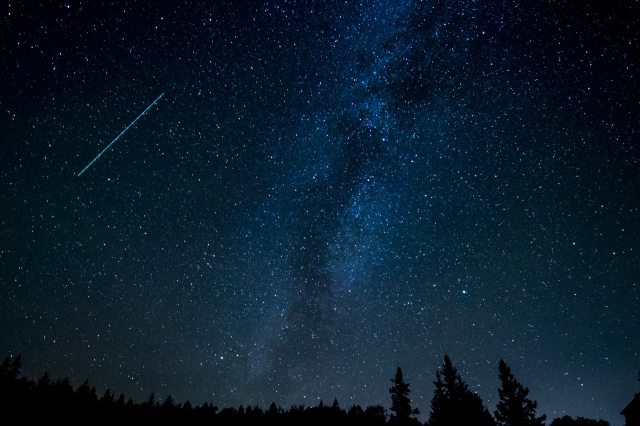Look up! There’s plenty of nighttime viewing for junior astronomers this July, and we’ve got the scoop on all the summer stargazing fun.
July has two new moons—and one of them is a “black moon.” So what exactly is a black moon? Even though the name sounds ominous, it’s really pretty simple. When two new moons happen in one month, the second is called a black moon. For those of us in North America, that happens on Wednesday, Jul. 31.
Not only is this month’s black moon a special treat (it happens once every 32 months), but it’s also a supermoon. This means the moon is near the closest point to our planet it gets on its Earth orbit, but sadly, we can’t view the awesomely illuminated surface. The new moon (black moon, that is) will line up between the Earth and the sun. With the sun’s rays shining on the opposite (far) side of the moon, we won’t have a view of the super sight.
But the black supermoon isn’t the only celestial event to see this summer. From Jul. 12 through Aug. 23 you can catch a view of the Delta Aquariids meteor shower, with its peak on Sunday, Jul. 28.
Your best chance at getting a prime view of the show is in late July/early August, during the second new moon. With the moon’s light out of the way, you could see as many as 20 meteors per hour, according to NASA!
Just head outside, preferably after midnight and away from street lights, and look halfway between the horizon line and the zenith.
—Erica Loop
Featured photo: Neale LaSalle via Pexels
RELATED STORIES
LEGO Is Launching New NASA-Themed Sets This Month & They’re Out of This World
Here’s How Your Kiddo Can Help NASA to Name the Mars 2020 Rover
LEGO Wants Fans to Design a Brick Spaceship to Mars











